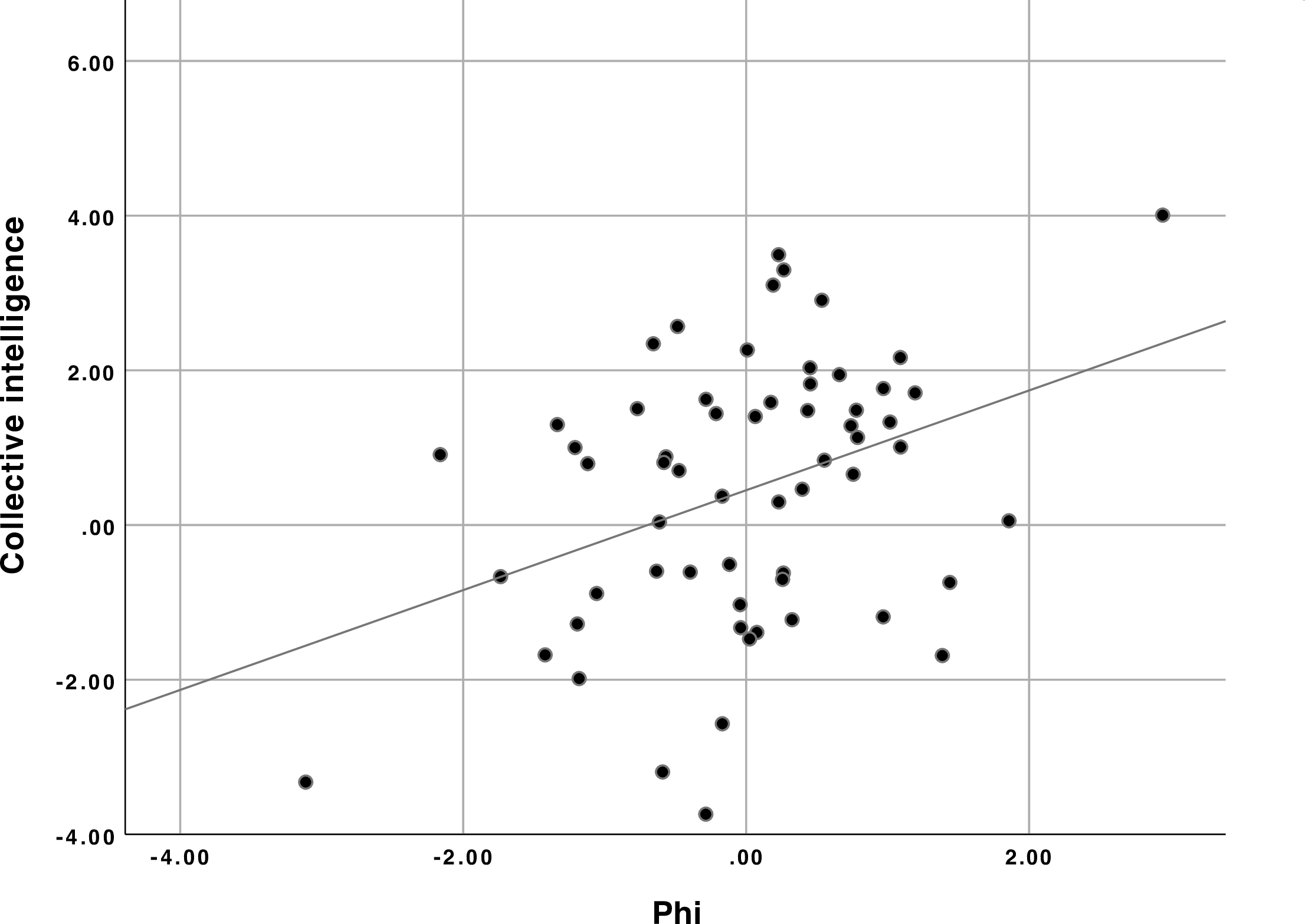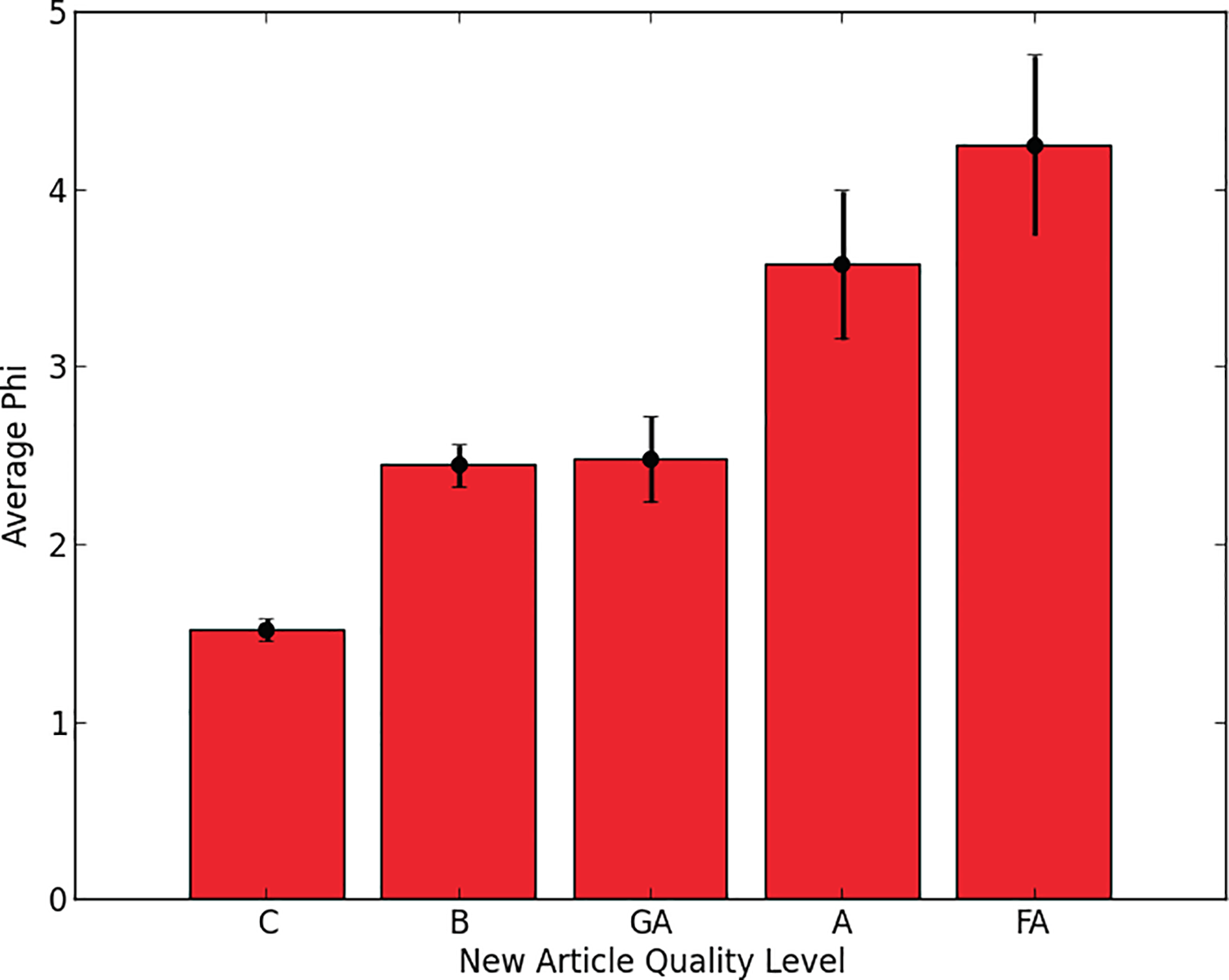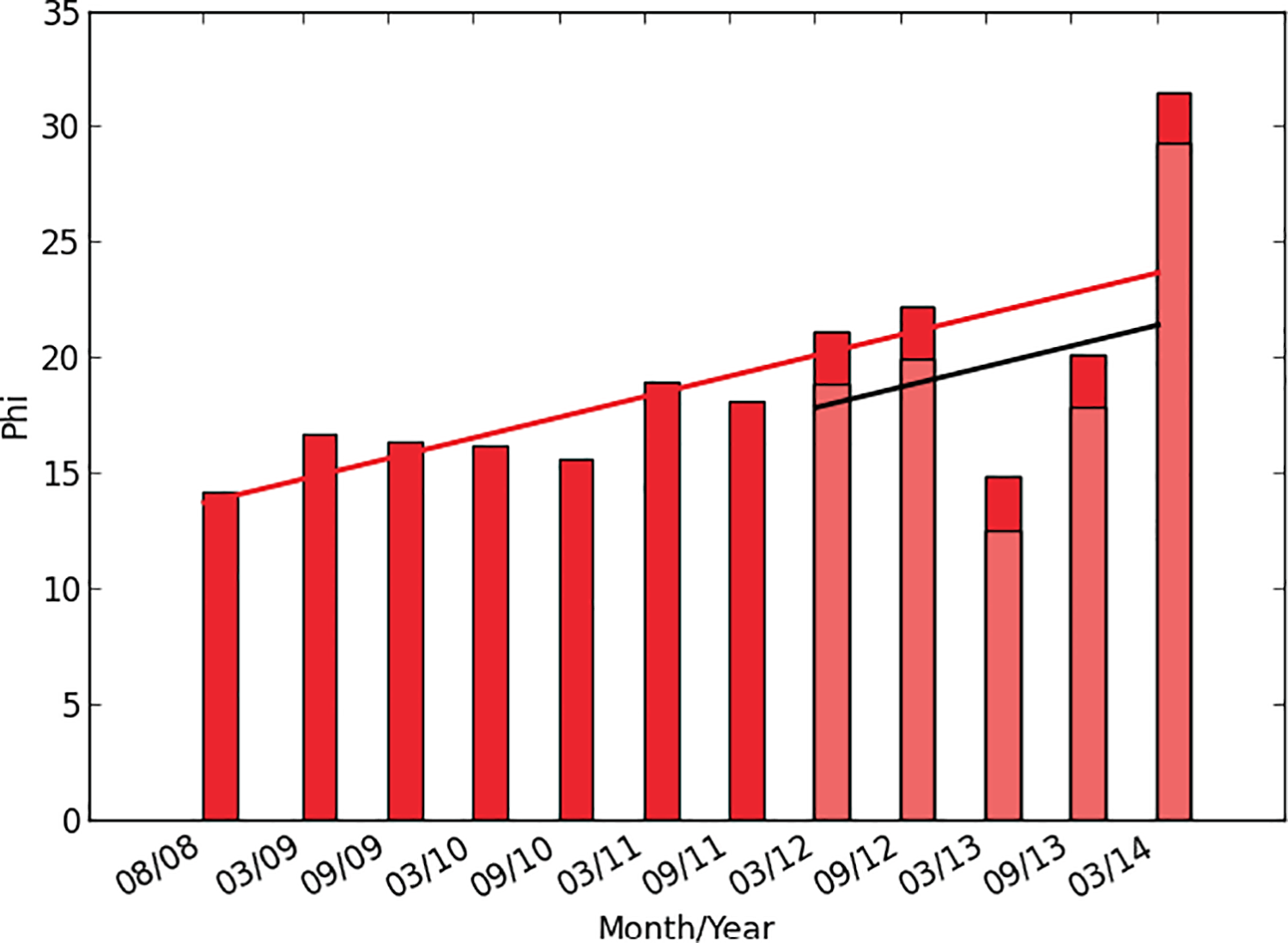Integrated Information as a Metric for Group Interaction
During my Postdoc at MIT we were interested in the question: “Could groups exhibit consciousness?” This might sound like an esoteric question at first but considering teams as a whole, they do perceive the world, deliberate internally over it and act upon it.
Integrated Information Theory, Phi and Consciousness
The integrated information theory(IIT) was proposed by Tononi in 2004. The central phi metric is a measure of network complexity. It is derived from the question of how much of the complexity of the system cannot be explained by the complexity of its parts. The metric was designed and put forward as a measure of consciousness in neural networks. Consciousness being a vague topic, it is controversial if IIT is actually a valid measures thereof. But it still is the best available metric.
The study
We applied this metric to three data sets:
-
Small groups: We analysed the chat logs of teams working on collective intelligence tasks. The teams were solving a wide variety of tasks and only had a chat system to coordinate and interact. These chat interactions and their turn taking can be interpreted as a network reacting to external stimuli. The individual people are the analogs to neurons in a neural network where a person posting a chat message corresponds to a neuron firing. This means we can calculate the phi metric of the system. We also had a collective intelligence score for each team that represents the general team performance (for more information on collective intelligence see my paper on the topic).
The hypothesis was that a higher level of consciousness should lead to higher collective intelligence. And that is indeed what we found:

Relationship between phi and collective intelligence.
-
Wikipedia discussion pages: The editors participating in discussions on the discussion pages of Wikipedia articles form natural groups. The groups interact via posts, their interactions and turn taking can be analysed the same way as for the small groups above. As outcome or performance metric of a Wikipedia article we quality of the article based on the Wikipedia maturity rating system..
Again the hypothesis is that higher scores on the phi metric would correlate to higher performance of the team. And again, that is what we found:

Average phi for groups editing Wikipedia articles of different quality levels.
-
Internet traffic data: This one is a bit further out there. We obtained internet traffic data that recorded anonymized packets with sender and target. With the most active hosts as nodes and their interaction patterns as links we built up a network that we again could apply the phi metric to. Here we did not have a performance metric but we noted the interesting pattern that phi of the internet traffic increased over the years.

Average phi computed on Internet traffic data over a span of 6 years.
Abstract
Researchers in many disciplines have previously used a variety of mathematical techniques for analyzing group interactions. Here we use a new metric for this purpose, called “integrated information” or “phi.” Phi was originally developed by neuroscientists as a measure of consciousness in brains, but it captures, in a single mathematical quantity, two properties that are important in many other kinds of groups as well: differentiated information and integration. Here we apply this metric to the activity of three types of groups that involve people and computers. First, we find that 4-person work groups with higher measured phi perform a wide range of tasks more effectively, as measured by their collective intelligence. Next, we find that groups of Wikipedia editors with higher measured phi create higher quality articles. Last, we find that the measured phi of the collection of people and computers communicating on the Internet increased over a recent six-year period. Together, these results suggest that integrated information can be a useful way of characterizing a certain kind of interactional complexity that, at least sometimes, predicts group performance. In this sense, phi can be viewed as a potential metric of effective group collaboration.
Citation
Engel D, Malone TW (2018) Integrated information as a metric for group interaction. PLoS ONE 13(10): e0205335. https://doi.org/10.1371/journal.pone.0205335\